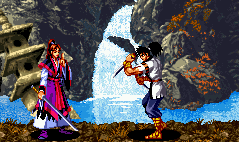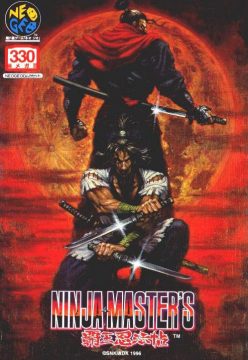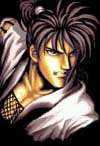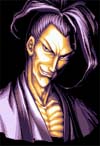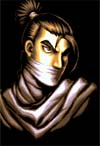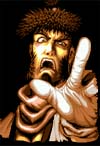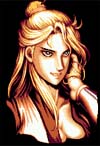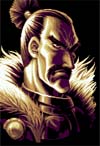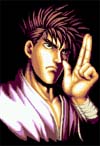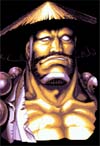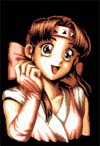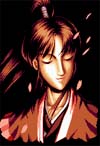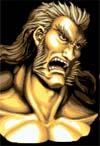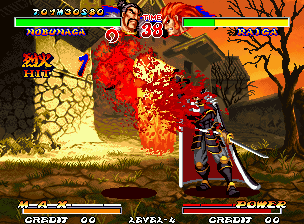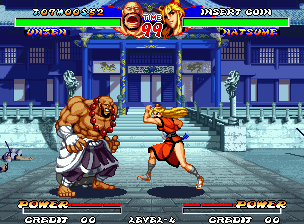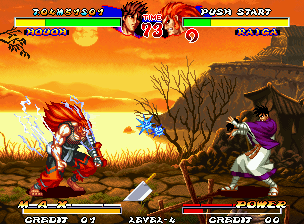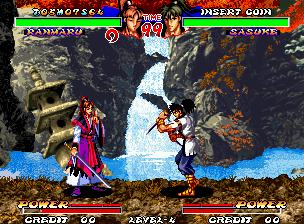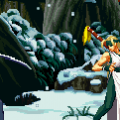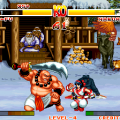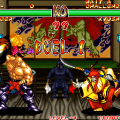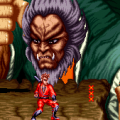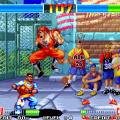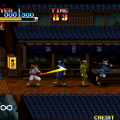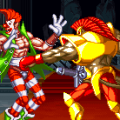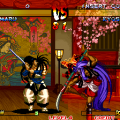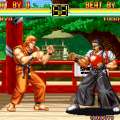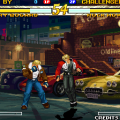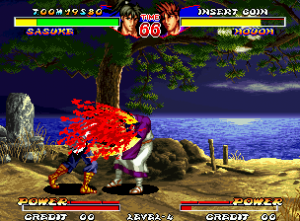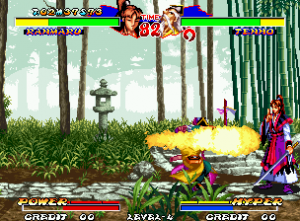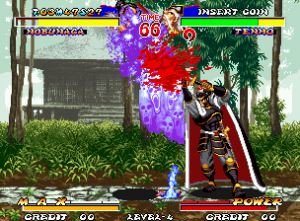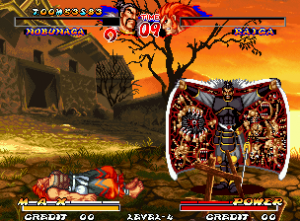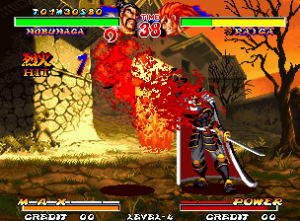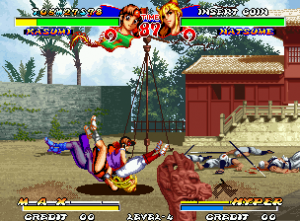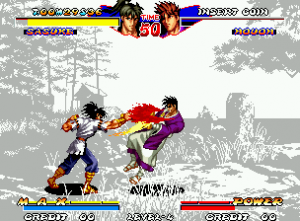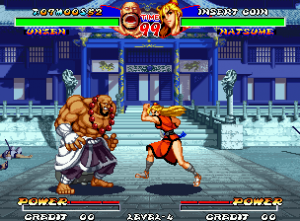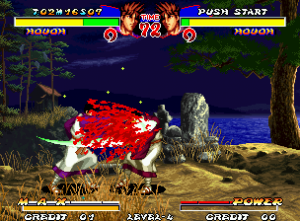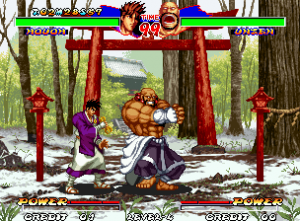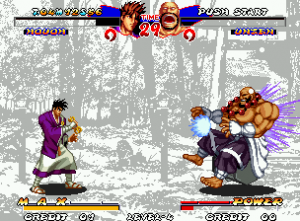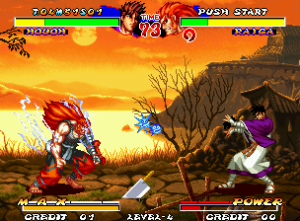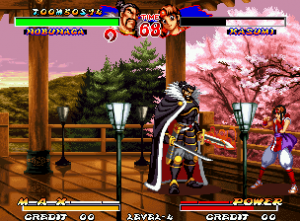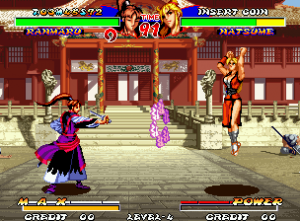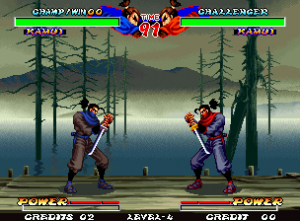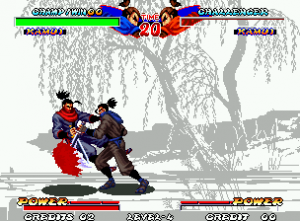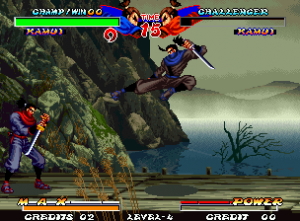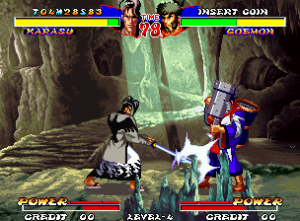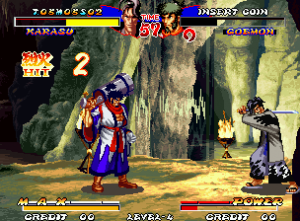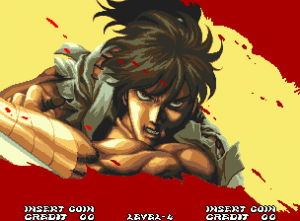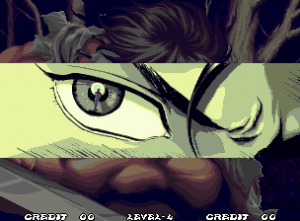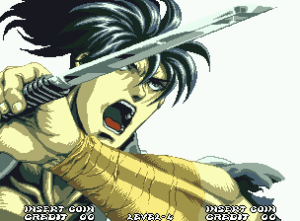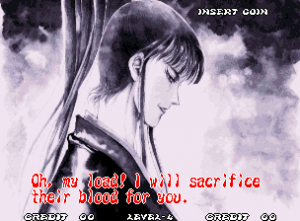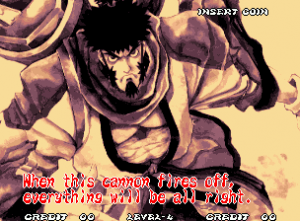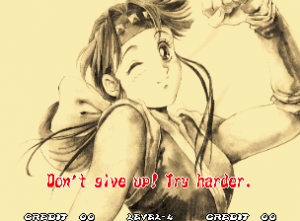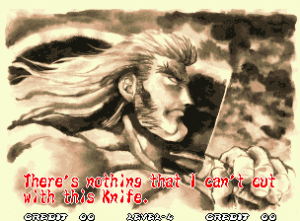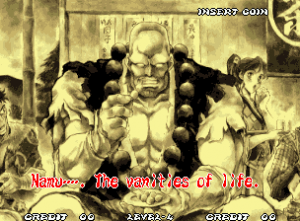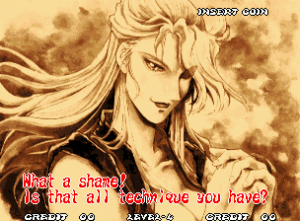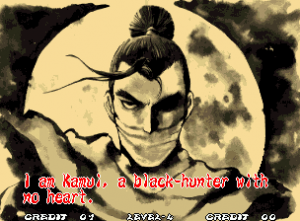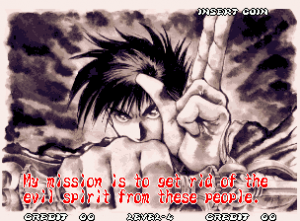As popular as fighting games were back in the day, there just wasn’t enough variation in the genre to coax most people away from the bigger franchises. So whenever a developer had a hit, they would tend to focus primarily, if not entirely, on that series alone. Capcom was successful enough that they could experiment with original titles on occasion, but they didn’t take the risk that often – just look at how many Street Fighter games and related cross-overs there are versus how few other fighters they released.
However, SNK was something of an exception to this fact. Rather than focus on their first successful fighting game franchise – Fatal Fury – they kept developing several original titles. A few of these were at least relatively successful – like Art of Fighting, Samurai Shodown, King of Fighters, and The Last Blade – but their others were less popular. Their last two original fighters were SNK Gal Fighters, and SNK vs. Capcom: Match of the Millennium, but those were cross-over games with their more popular characters. Before that, there was Savage Reign and Kizuna Encounter – a series of two games that combined elements of their more popular franchises. They also made Street Smart, but that was before the release of Street Fighter II, when SNK had yet to establish themselves as a major force in the fighter genre.
Then there were the games made by SNK’s second party developer ADK. They had a relative hit with World Heroes, which had insane characters and an awesome death match mode, but it was just too slow to rival franchises like Street Fighter II and Fatal Fury. They also made Aggressors of Dark Kombat, which brought elements of beat-em-ups to the genre, but despite its innovation, it wasn’t all that great. Their lone remaining entry in the genre is a game called Ninja Master’s: Haou Ninpou Chou, which was co-developed with SNK and is by far the best fighter that ADK was ever involved with.
Ninja Master’s takes place in feudal Japan. It’s similar to Samurai Shodown at a thematic level, except the characters are mostly ninjas, rather than being a combination of various combatants of the era. Its plot takes place at a time when a warlord named Nobunaga is attempting to take over all of Japan, but it’s mostly just about a bunch of ninjas kicking the crap out of each other, with their own separate motivations having brought them all together.
There are two bosses in Ninja Master’s. Both of which are playable via the following code: On controller 1, highlight Kamui, then enter left, down, left, up, left, down, left, up, right, down, right, up, and push C + D. Or, on controller 2, highlight Sasuke, then enter right, down, right, up, right, down, right, up, left, down, left, up, and push C + D.
Characters
Sasuke
Sasuke is a ninja who’s determined to defeat the warlord Nobunaga. This supposedly defies some kind of ninja rules, so he’s being pursued by ninja assassins as a result. Sasuke also appears in SNK vs. Capcom: Card Fighters DS.
Karasu
Karasu is a body guard for hire, who travels the land looking for work. He is followed around by crows (“karasu” is Japanese for “crow”), and wields a crazy magical sword.
Kamui
Kamui is Sasuke’s friend and rival. Despite this friendship, he’s looking for Sasuke to kill him, which is supposed to be in accordance to ninja law. Pretty dumbass law, if you ask me.
Goemon
Goemon is a thief that robs from the rich and gives to the poor. He’s partially based on a real historical figure who was kind of like the Japanese equivalent of Robin Hood. While well intended, his thievery has gotten him in trouble with the law, so he has Raiga chasing after him.
Natsume
Natsume was trained to become a warrior to follow in a tradition of her village. She was bothered by nightmares, and found that they were somehow caused by something in a far away land. So she left her village to put an end to whatever is responsible for her nightmares, and got mixed up with the rest of the game’s cast.
Nobunaga
Nobunaga is the final boss character. He’s partially based on a real historical figure named Nobunaga Oda, who shows up pretty often in various Japanese video games. His cape seems to be alive, which is displayed during his win poses, where he opens his cape and you can see that it is inhabited by demons.
Tennoh
Though he was born is Korea, Tennoh came to Japan from China when he sensed some kind of disturbance in the force, or some other kind of crazy shit. He’s supposed to be a Taoist, but I don’t remember anything about Taoists having magical powers, so I can’t really offer any explanation for his actions other than to state the obvious and say that he’s just really impulsive.
Houoh
Houoh has the ability to expel demons, but somehow this ability attracts demons. Say what? He also has some kind of a beef with demons, because they killed his parents. This doesn’t make much sense, at all.
Unzen
This huge kind hearted ninja guy becomes violent after he has a few beers. So depending on where and when you’re from, he’d either be considered a psychopath or a partier. He’s also a monk, or something, but was kicked out of the temple that he tried to join. He currently lives in seclusion in the mountains.
Kasumi
Kasumi is a ninja in training who was foretold by her grandmother to be destined to end all the feuding in the land, or something like that. So she leaves home to kick ass and get out of her harsh training regiment, because she’s lazy like that.
Ranmaru
Ranmaru is the game’s first mega-badass boss. Despite appearances to the contrary, Ranmaru is male, but he’s easily the most female looking male in the history of fictional characters. He’s partially based on a real historical figure named Mori Ranmaru, who was a follower of Nobunaga Oda.
Like in most other fighters set in feudal Japan, each character fights with a weapon. These include swords, duel knives, a GIANT hammer, a knife on a rope, a meat cleaver, a wooden sword, a portable cannon, and even a light saber (?!). What differentiates Ninja Master’s from most weapon based fighters is that you can switch between fighting with your weapon or bare handed by pushing B and C at once. As opposed to Samurai Shodown, where if you lose your weapon, then it is replaced with low powered punches, in Ninja Master’s your fists are just as effective as your weapon, similar to Suikoenbu. In fact, a few bare handed moves are completely different from their armed counterparts – for example, Geomon’s cannon firing move will be replaced with a completely different projectile that travels along the ground. So the difference between fighting with or without your weapon is mostly strategic, and you have just as good of a chance of winning when fighting with either style. It’s also possible to have your weapon knocked away from you after your opponent lands a combo, but you can grab it again by holding the joystick in the down position and pushing B and C at once while standing over it.
Despite its setting and the presence of weapons, Ninja Master’s doesn’t really play at all like similarly themed games Samurai Shodown and Last Blade. Like many other Neo Geo fighters, pushing either the A or B buttons will perform punches, while C and D execute kicks. You can also dash by double tapping forward, or back dash by double tapping backward. Where it really strongly differentiates from other SNK games is in its combo system. Most problematically is the presence of “dial-a-combos” – it’s actually executed relatively well, but it will definitely take getting accustomed to if you don’t regularly play games with this kind of technique. Oddly, you can also buffer certain moves by entering other commands after the command for the original move, which, if your timing is correct, will make your character perform extra attacks before comboing into the move. It’s a bit awkward when you first start playing, but it never really interrupts the flow of fights.
Like in Art of Fighting and early Fatal Fury installments, whenever your character’s health is low, you can perform desperation moves. Attacking will build up a super meter at the bottom of the screen, and when it maxes out, you have access to several options. While your super meter is at max, you can perform high powered normals, which are performed by pushing both punch or kick buttons at once. If you push A, B, and C all at once, then you will enter Hyper mode, which will cause your super meter to steadily drain. While in Hyper mode you lose access to high powered normals, but you can perform desperation moves whenever you like, regardless of how much health you have. There are also super desperation moves – executing these requires that you are either in Hyper mode, or that your super meter is at max AND your opponent’s health meter is low.
It’s kind of strange that such a great fighting game – made in part by SNK of all developers – has been completely forgotten, and the fact that it’s such a fantastically presented game makes it all the more bizarre. Each character has an extremely over-the-top moveset, with all kinds of crazy magic powers – there are fireballs all over the place, and SNK didn’t shy away from applying glowing effects to moves. There are other really great animations for several of the characters, as well, like a character whose fireball takes the form of a crow magically flying out of his shirt. This same character also has a really cool animation for when he switches to armed combat, where he reaches out and grabs his sword out of thin air, as if it were materializing out of hammer space or something.
Its soundtrack is inspired by traditional Japanese music, and you can tell that its developers concentrated on making each composition go along with the visual setting of its corresponding stage. Its background designs have settings comparable to Samurai Shodown‘s, except with a completely different art style. There’s a stage that’s set in front of the steps leading to an old hermit’s residence, with a drifting mist filling the background above the tall grass. Another level takes place on a bridge over a lake – there’s a submerged dead tree in the immediate background, and a misty haze billows over hills in the distance. Yet another stage takes place in front of an elaborately designed courtyard that has obviously been the scene of a recent battle. There’s also a level set on a snowy mountain, with trees parting in the background to reveal a snow caked building. Then there’s the cave level, with bats flying around, and excellent lighting and waterfall effects to the right. Several of the stages can be played at different times of day, and during the third round they will all have extra details in the background and/or foreground, like swarms of dragon flies, leaves, snow, or fireflies.
It’s more than just flashy movesets and awesome looking backgrounds that make Ninja Master’s look so great – there’s also a fair amount of style to the game. For starters, it’s a bit gorier than most other SNK fighters – characters won’t ever be killed at the end of a fight, like in Samurai Shodown or The Last Blade, but a rather plentiful amount of blood will spray out when they are hit with their opponent’s weapon. The game’s intro easily ranks among the best for the hardware – it’s an anime style animation that depicts Sasuke being attacked by a group of ninjas at night in the rain. However, its two most memorable touches are seen whenever matches and/or individual rounds are decided. After any character is KO’d, the background will change to monochrome and begin flashing like crazy – this looks cool as hell, and needs to be seen in real-time to really be appreciated. An even cooler looking detail is that every character’s win quote is displayed against a heavily stylized image of them.
There’s really no telling why Ninja Master’s is so obscure. Maybe it’s because it was released for an arcade hardware system that had so many even better fighters. Or maybe it’s because of the crappy combo system. Another possibility is that it was released around the same time as Samurai Shodown IV and The Last Blade – two games with comparable themes, better gameplay, better characters, better music, and better graphics – and it just had no chance in hell of competing. What’s really bizarre is that even games like Fighter’s History Dynamite and Aggressors of Dark Kombat have been able to gain more recognition than it has. Still, it’s a great game, and it’s well worth playing for any fighting game fan. Yeah, its combo system isn’t that great, but you’ll get accustomed to it after a while. However, it is most certainly not worth the obscene cost of its AES cart, so get it for MVS if you want to own it.
Ninja Master’s appeared as an arcade-perfect port on SNK Playmore’s ADK Tamashii compilation for the PS2 in December 2008. This was initially only released in Japan, but found itself on international PlayStation Network stores as an emulation for the PlayStation 2. The package itself is pretty barebones – upscaled, filtered graphics, no arranged soundtracks – but it plays just fine.
